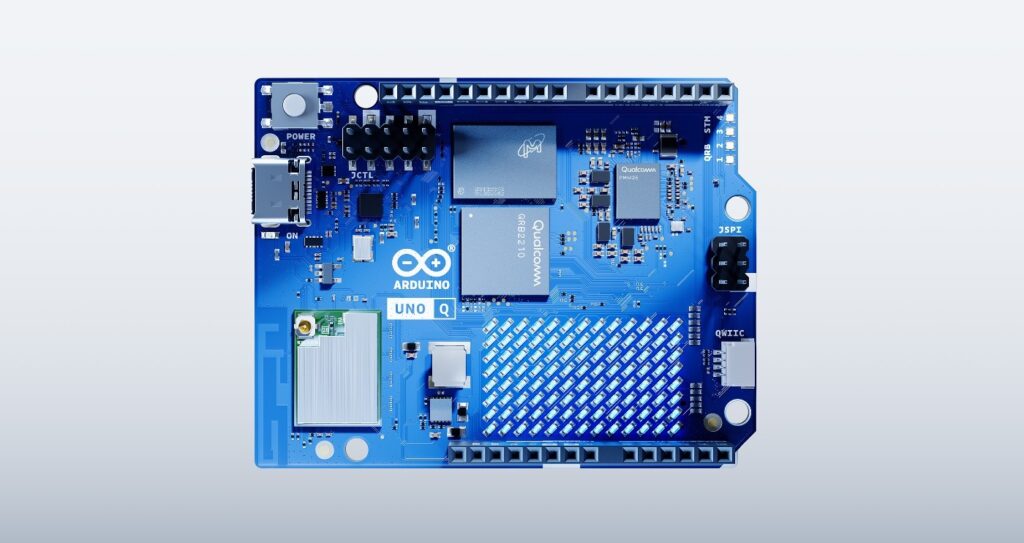The Arduino UNO Q has landed, and it’s not just another board in the lineup; it’s the most connected one yet. With a Qualcomm processor, STM microcontroller, and brand-new software support, this release plants a flag in both hardware and development.
Arduino UNO Q brings a powerful dual-chip architecture

At the center of the Arduino UNO Q sits a Qualcomm Dragonwing QRB2210 processor with four Cortex-A53 cores, backed by an Adreno GPU. It doesn’t run alone. An STM32U585 microcontroller with a Cortex-M33 core handles peripheral-level duties, keeping real-time control cleanly separated from heavier tasks.
This hybrid setup isn’t just marketing fluff; it unlocks more responsive computing and robust task delegation. Developers now have headroom to run complex applications while maintaining precise hardware control.
New Arduino UNO Q model includes a full wireless stack
Connectivity gets a major boost here. The UNO Q ships with Wi-Fi 5 and Bluetooth 5.4, plus a USB-C port that can double as both video output and camera input. Microphones, however, still require dedicated pins.
You’ll also find:
- 2 GB RAM and 32 GB eMMC (with a 4/64 GB version on the way)
- USB-C for data and power
- Support for Zephyr OS and Debian interface
Meanwhile, pin configuration options allow more flexibility, great for custom builds or prototyping sessions where ports are precious.
Software adds more than polish
To match the new board, Arduino introduced App Lab, its new development environment that works across major platforms. It’s designed to simplify prototyping and speed up deployments. Zephyr OS comes preloaded and works in tandem with Debian for enhanced memory protection.
Still, price and launch dates remain under wraps.
Variants expand options, not confusion
Instead of fragmenting the lineup, Arduino is keeping things simple. The UNO Q launches first with 2 GB RAM, followed shortly by a 4 GB model. Storage scales in tandem. This keeps the decision-making process clean, while still giving developers room to grow.
Arduino UNO Q opens the door to bigger builds
This isn’t just a spec bump. By pairing serious compute power with refined control and fresh software, the Arduino UNO Q feels like a reboot of the classic formula, leaner, smarter, and ready for more ambitious builds.
The small board scene just got louder.














